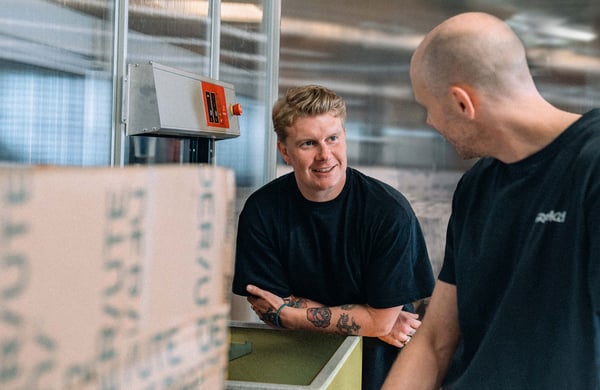So many different design ideas and iterations, I ended up spending all my money on this hobby! The most notable of these early creations was one of the first onesies – essentially sweatpants and a sweater sewn together as one piece, and it quickly became my favorite. I wore it all the time and regularly received questions and comments about it. While wearing one in Australia one time, I had like 10 people run over to me on the street to ask me what I was wearing, saying how cool it was and wanting to know where I had bought it. After this, I decided okay, I should make this. It should be my brand. And that’s exactly what I did! I went back to Shanghai, went on factory tours, tested different fabrics to find the best quality and the best fit. You know, I was really hands on – I loved my product and once I had manufacturing sorted out, I decided to make my own website.
This was back in the day, so I didn't have all the options that entrepreneurs have now. But I made a WordPress site, added WooCommerce, and started selling. Then, I started marketing on Facebook and reached out to people with large followings. This is early – way before the established influencer marketing that we have now, but I started having them wear it which got a ton of exposure. Social media, TV, you name it. Basically, I was rolling in it and had tremendous success.
But instead of being able to celebrate my success, I quickly realized that I had a huge problem with not only production, but most of all logistics. This is because when I had placed my orders from the factory, I had all the product shipped back to my own place – which was now suddenly full of boxes. I had to spend all my time packing and shipping, never catching up. The first 2,000 copies sold just in time for the second wave to hit. Then the third wave had 10,000 orders come in – there was no way for me to have due diligence on each and every order anymore.
At the time, I had no easy way of solving this – the 3PL market in Norway didn’t have many options at the time, but I finally found somebody who said that they could help me. There was no option but to accept their help, but they totally messed it up. They were shipping the wrong products to the wrong clients, wrong sizes, and the deliveries were always late. I lost control of my product, the “customer experience” was beyond criticism, and as a result, I lost this big, awesome wave that I was riding. I had started a trend and got burned because I couldn’t keep up with fulfillment. Then, my product was copied by super professional competitors that had their logistics in order, who are still in the business and have sold hundreds of thousands of the suits that I originally came up with.
That experience was the foundation for me when developing Pio for the SMB market. It’s the missing piece of the puzzle in today’s ecommerce environment. Then, when I met Simen Aarseth, all the pieces fell into place. Based on our mutual passion for technology, culture, and entrepreneurship, it finally boiled down to the desire to make a difference for independent brands. A difference that would not only benefit these brands, but ultimately contribute to more freedom of choice for us as consumers.





